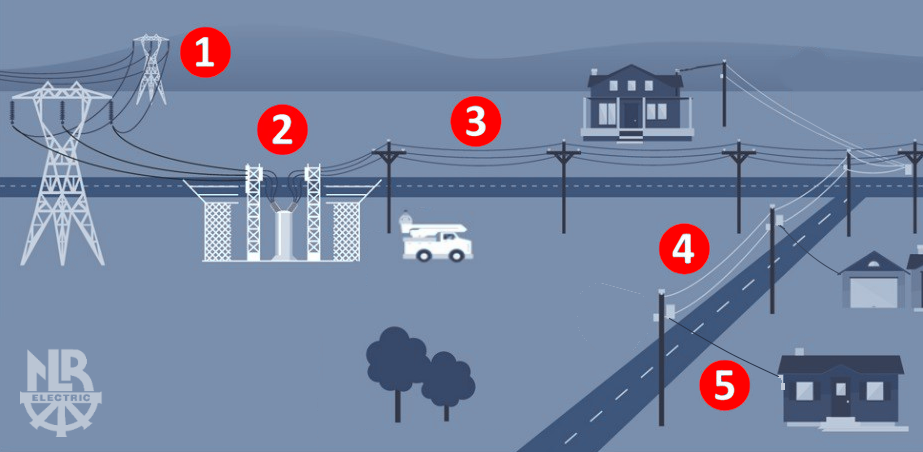How NLRED Restores Power
When an outage occurs, our top priority is to restore your power quickly and safely. NLRED mobilizes all available crews and equipment, and will ask for assistance from other utilities in our mutual assistance program and hire outside contractors if necessary.
During the restoration of electrical equipment due to storm damage, NLRED works to restore power to equipment that feeds the largest number of customers first and continues until all customers have power. This could include high-voltage lines (1) and structures, substations (2) or switch station equipment. After this damage is repaired, we work to restore the greatest number of customers, keeping safety in mind, repairing main feeders/circuits in communities (3), neighborhood lateral lines (4), and then work to restore individual customer’s transformers and service lines (5).

1. High voltage transmission lines – delivers power from the power plants to the substations.
2. NLRED Substation/switch equipment – transforms the electrical voltage so it can be routed to the main distribution lines/circuits.
3. Main feeder lines/circuits – delivers power to large subdivisions and large businesses.
4. Lateral lines – neighborhoods and streets are served with lateral power lines feeding off the main circuit which are protected with a fuse. These lateral power lines are usually located in the rear easements of the subdivisions. If there is a fault on your lateral it will blow the fuse causing an outage to your home but protecting the electric lines of the neighbors across and/or down the street.
5. Transformers/service lines – delivers power to individual customer locations either overhead or underground. All customers are served by transformers that are also protected by a fuse link. If your transformer fuse detects a fault and blows it only affects your home and 4 or 5 of your neighbors.
